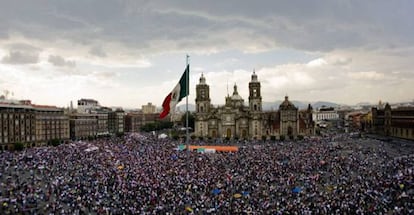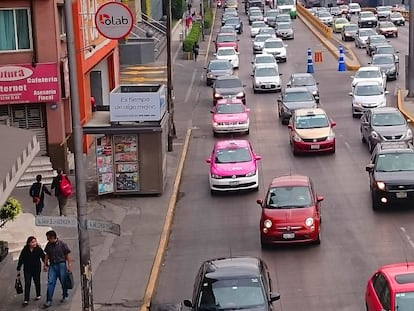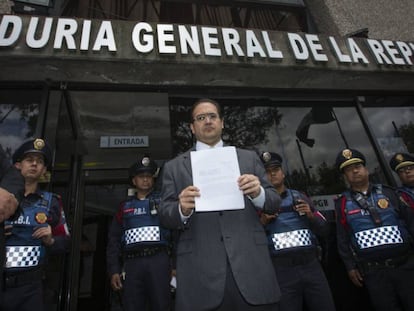After 60 years, Mexico’s iconic Zócalo is about to get a facelift
Square will expand by 2,000 square meters, but motorists are concerned about the impact on traffic

One of Mexico City’s most iconic landmarks is about to undergo a major overhaul. Already one of the world’s largest city squares at 46,800m2, the Plaza de la Constitución – as it is formally called, even though residents refer to it as El Zócalo – will add a further 2,000 square meters by swallowing up one of the six traffic lanes that surround it.

The expansion project will begin this month and cost around 150 million pesos (around €7.2 million), according to the local government. However, the National Anthropology and History Institute (INAH) is currently reviewing the details, and a start date has not yet been announced.
When it does begin, it will the first time that the Zócalo has been revamped in 60 years.
“It will all start with improvements to the pavement, which is currently uneven, broken and full of patches,” explains Roberto Remes, coordinator of the Public Space Authority and one of the contributors to the project.
In high congestion areas, it is much faster to walk to your destination than to drive
Eugenio Riveroll, Sin Tráfico
This entails removing the entire surface of the square and digging 50 centimeters down in order to level the ground.
Because the city center is built in a lake area over the ruins of the ancient city-state of Tenochtitlan, the capital of the Aztec empire, many nearby monuments have sunk with the passing years.
This also means that the INAH needs to greenlight any reform work, to ensure that the city’s historic and architectural heritage is not damaged in the process.
Bad for traffic?
One of the most controversial points of the expansion is how it will affect traffic in a city where car congestion is already an everyday occurrence. But authorities say that drivers will not suffer from the change.
“There is no need for six lanes, there is ample room for circulation around the square, although it is true that access lanes are limited,” says Remes. Another positive point, he adds, is that less space for vehicles will mean safer pedestrian crossings and fewer accidents.
When work begins, it will the first time that the Zócalo has been revamped in 60 years
Eugenio Riveroll, head of a company called Sin Tráfico (Without Traffic), agrees that limiting traffic on wheels is the right way to go.
“In high-congestion areas, it is much faster to walk to your destination than to drive, so projects that favor pedestrians and cyclists contribute to a more sustainable and efficient mobility,” he said.
His company estimates that around 15,000 vehicles pass around the square on traffic-heavy days.
Authorities are also planning to invest 500 million pesos (€24.2 million) in supplemental items such as public lighting in a square that is routinely used for concerts, marches and protests.
Remes noted that, save for subway construction work in the 1960s, the last changes to the Zócalo were made under Ernesto P. Uruchurtu, who was mayor between 1952 and 1966.
English version by Susana Urra.









































